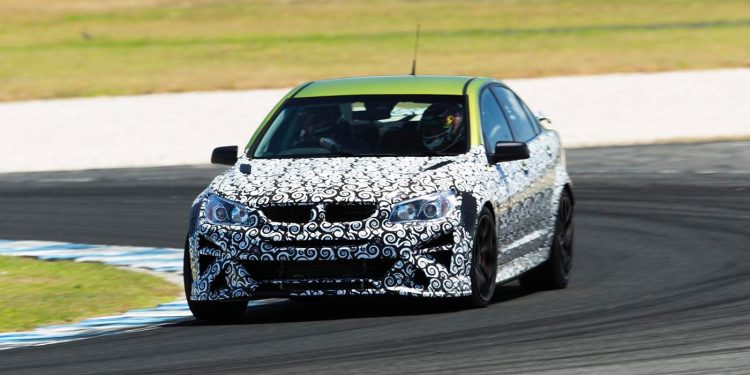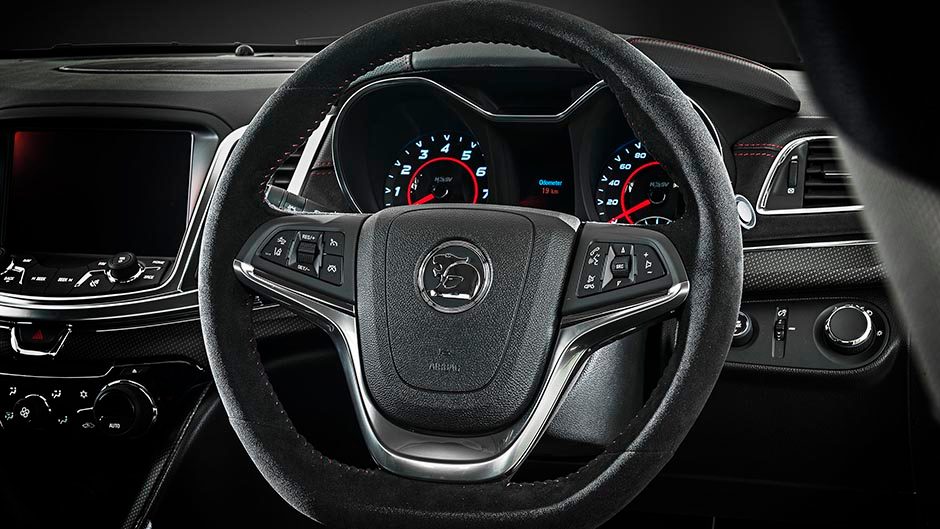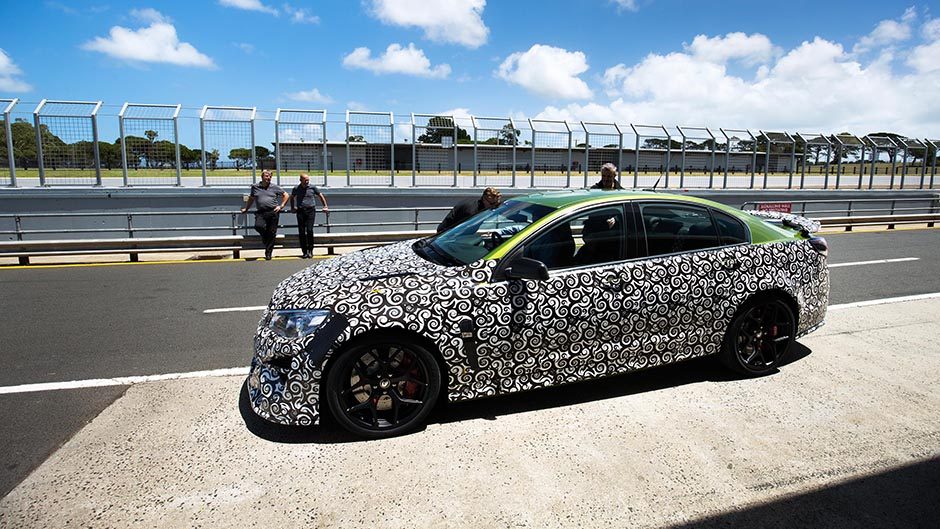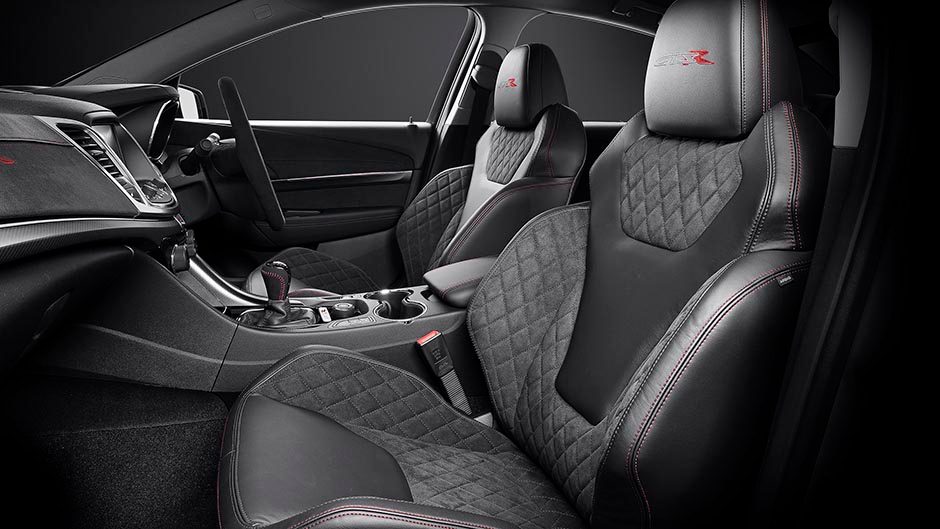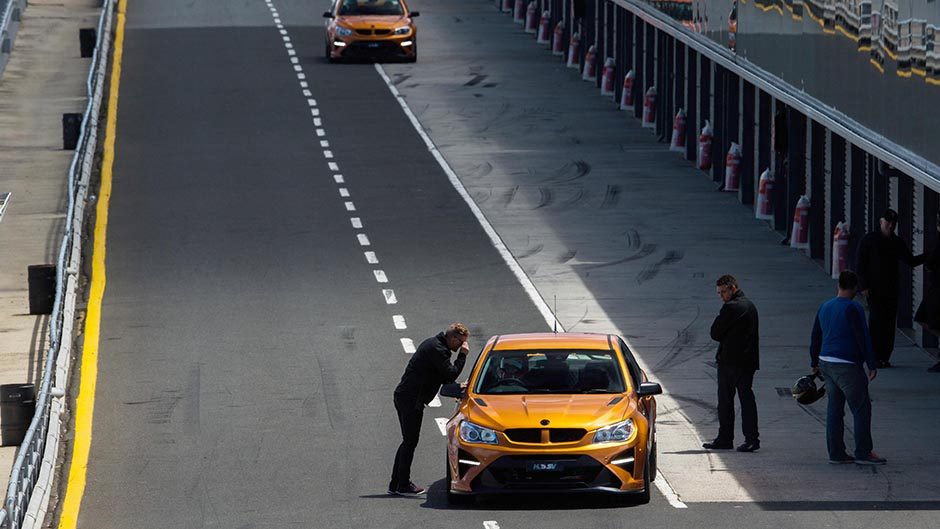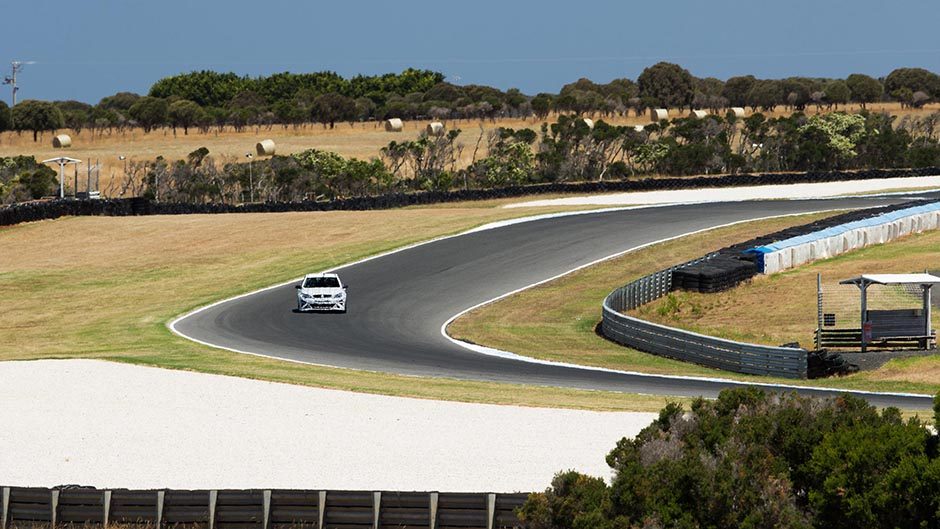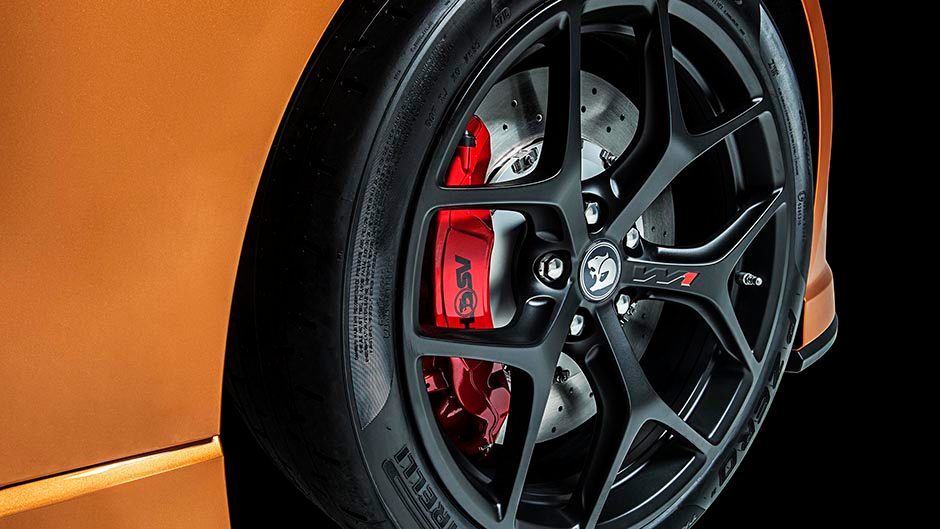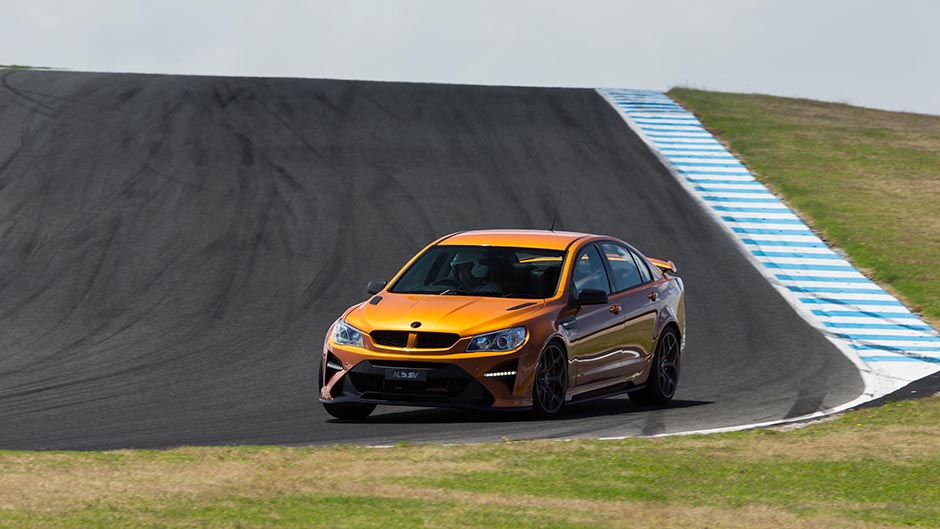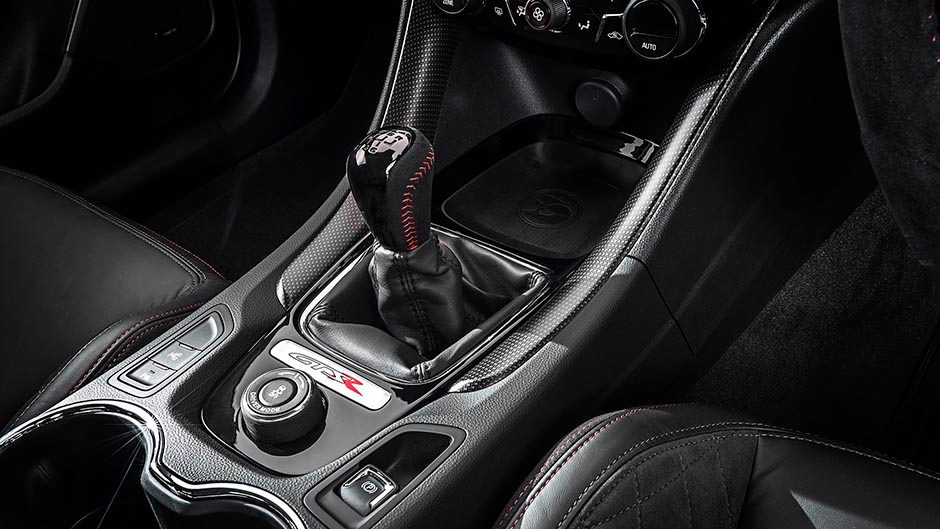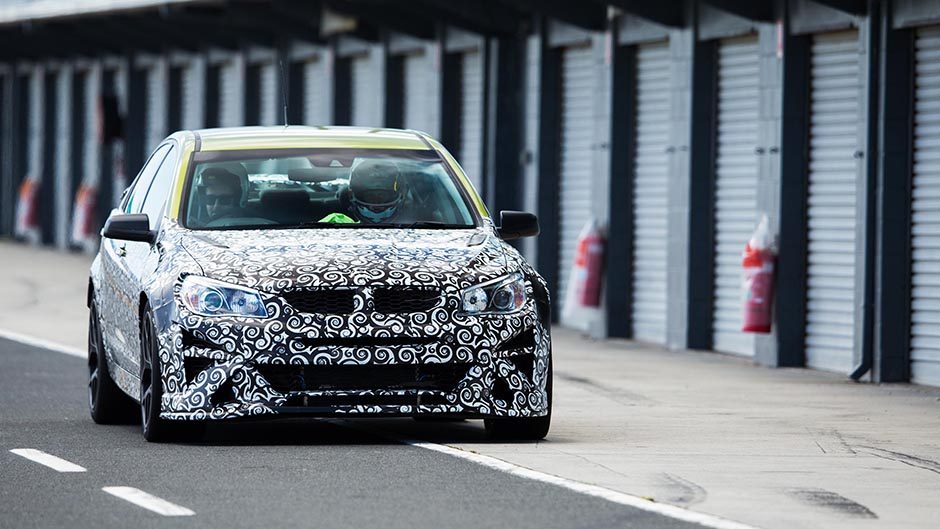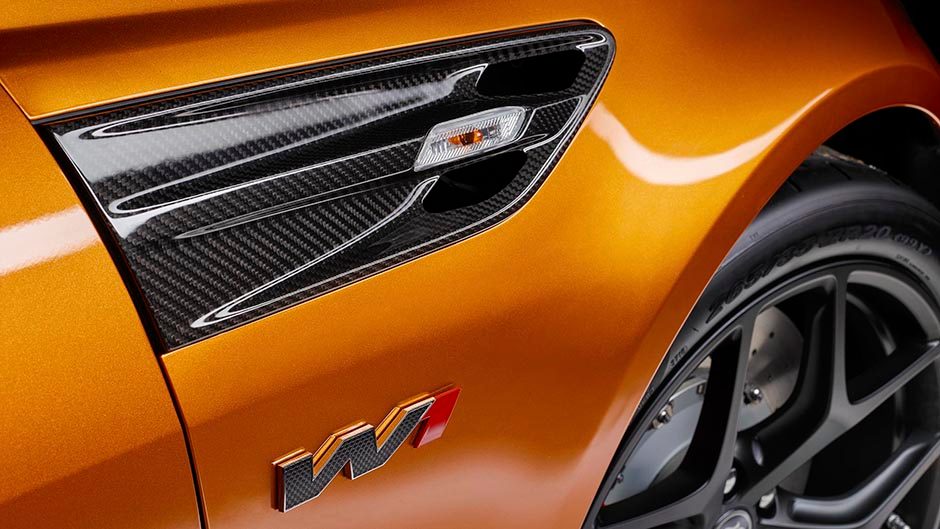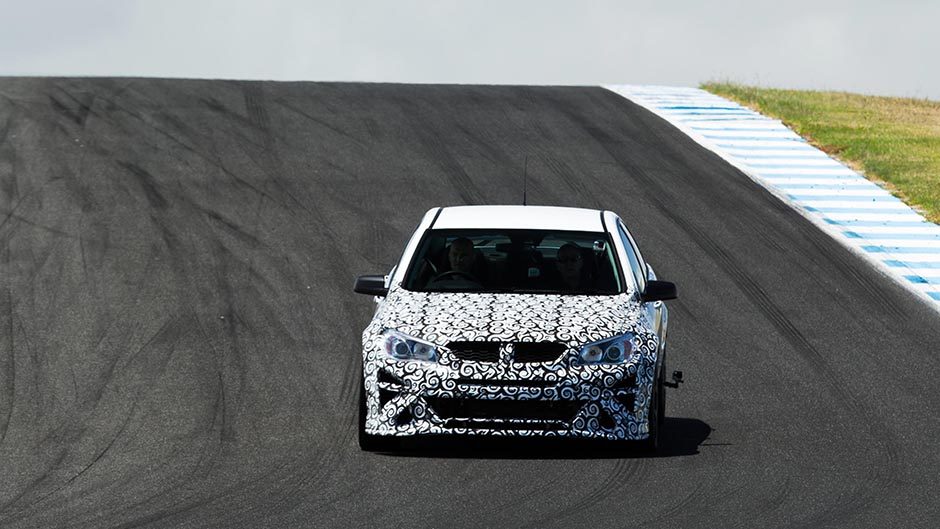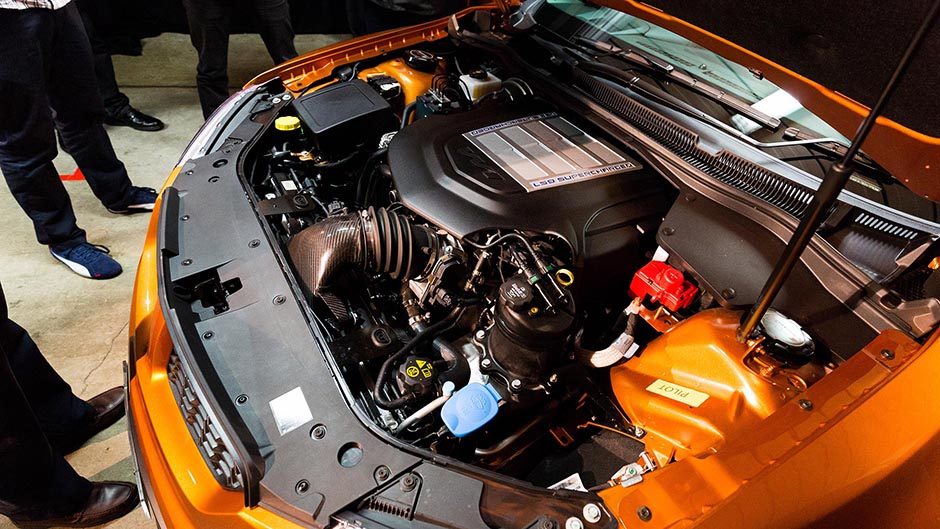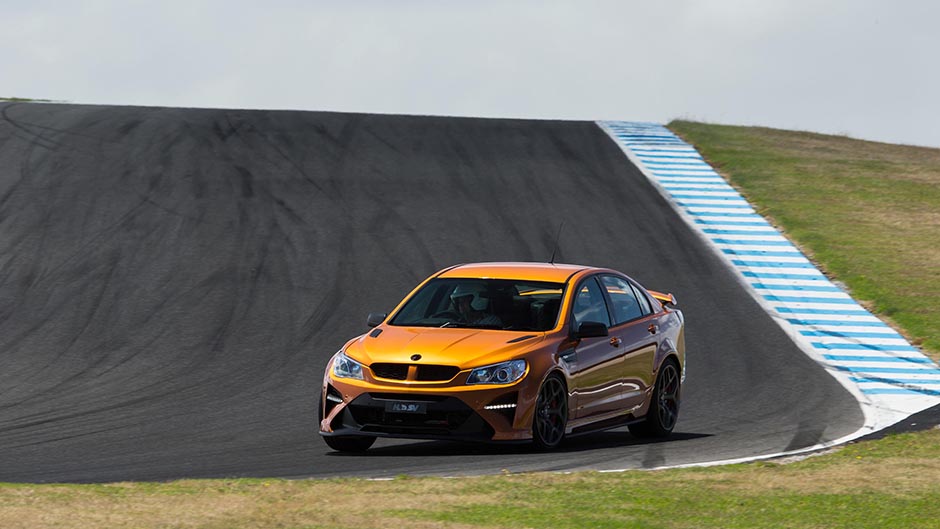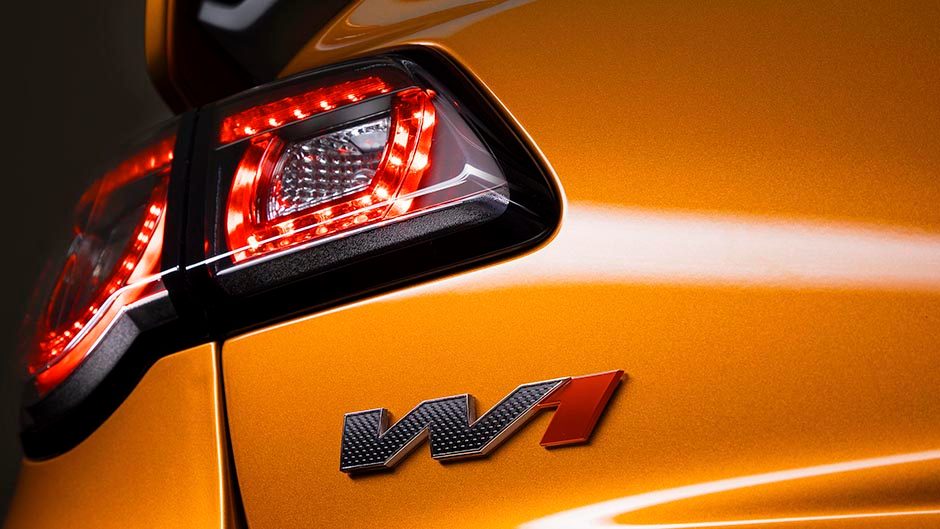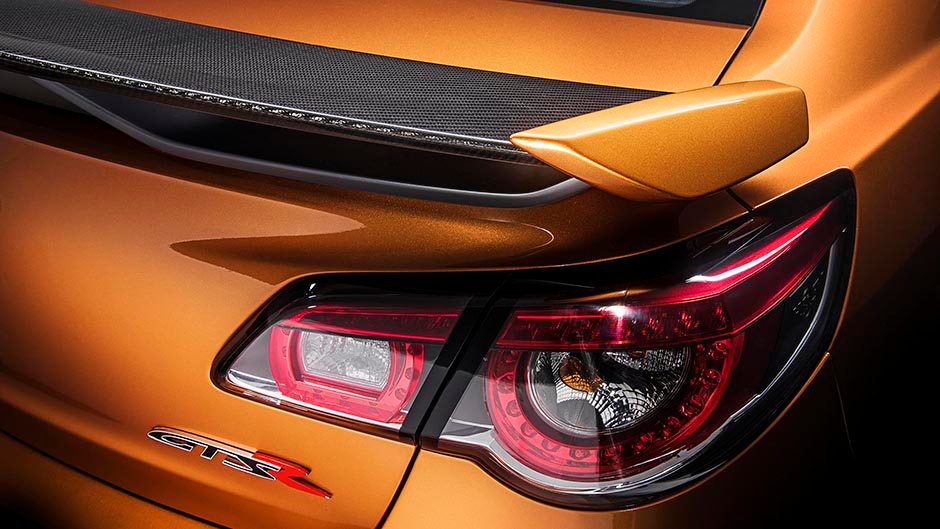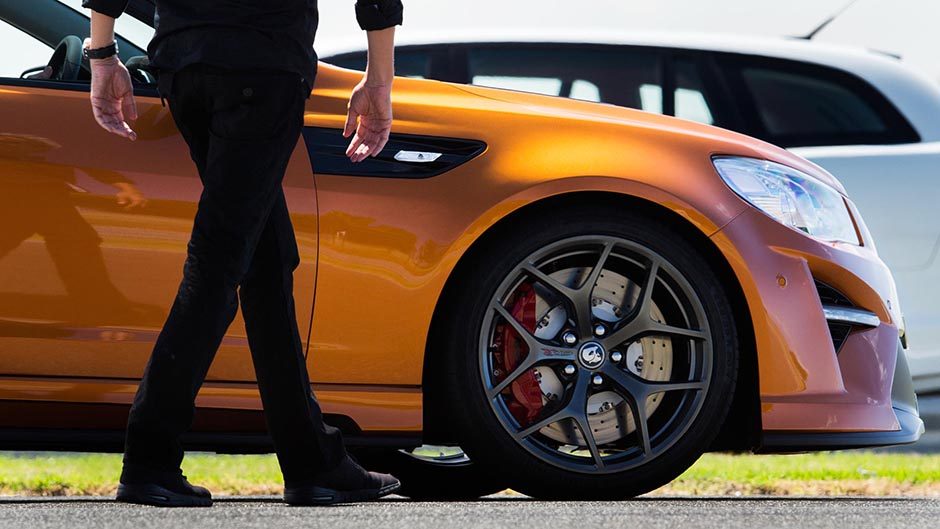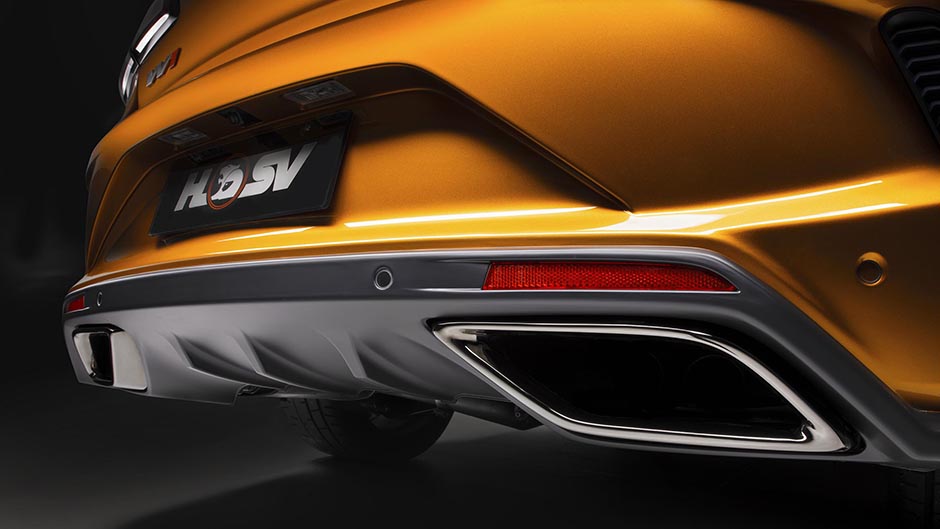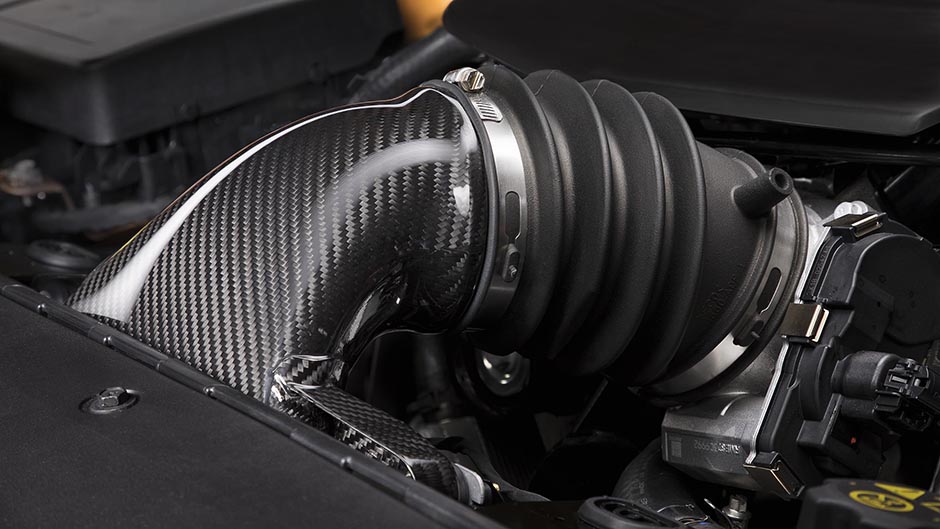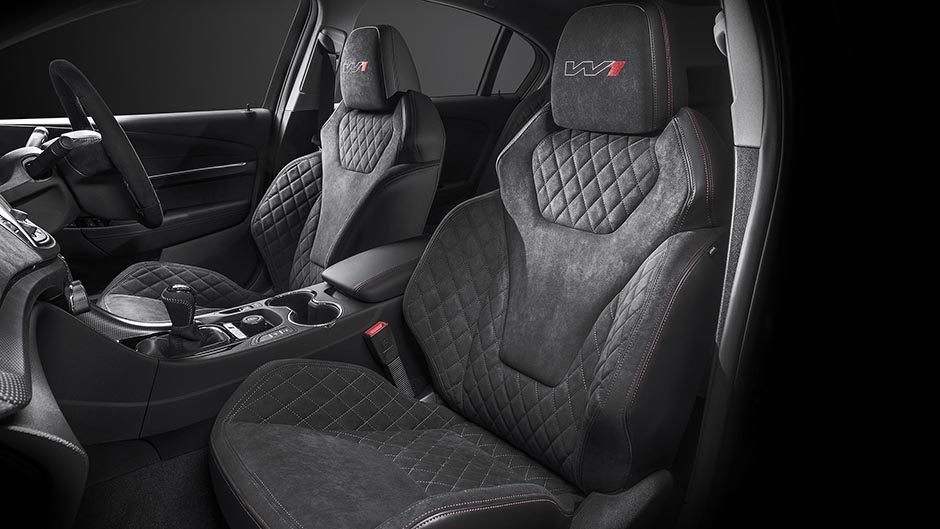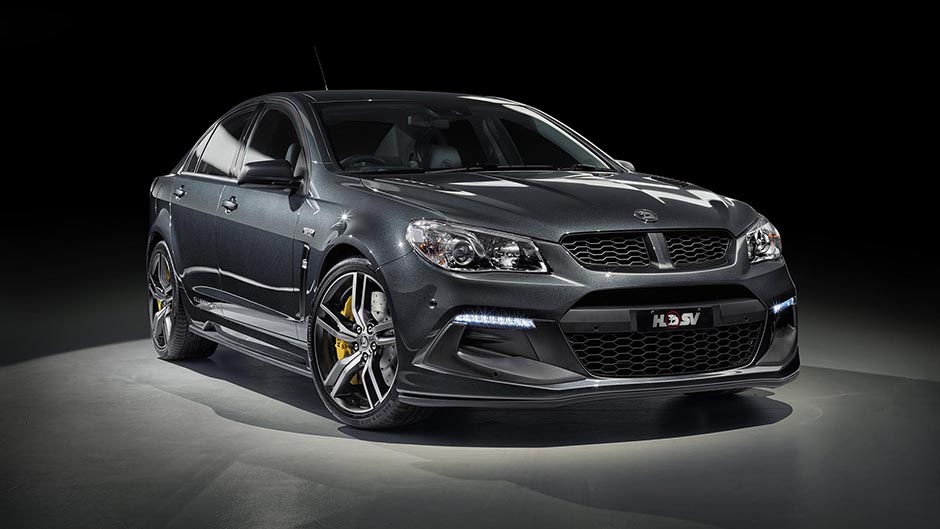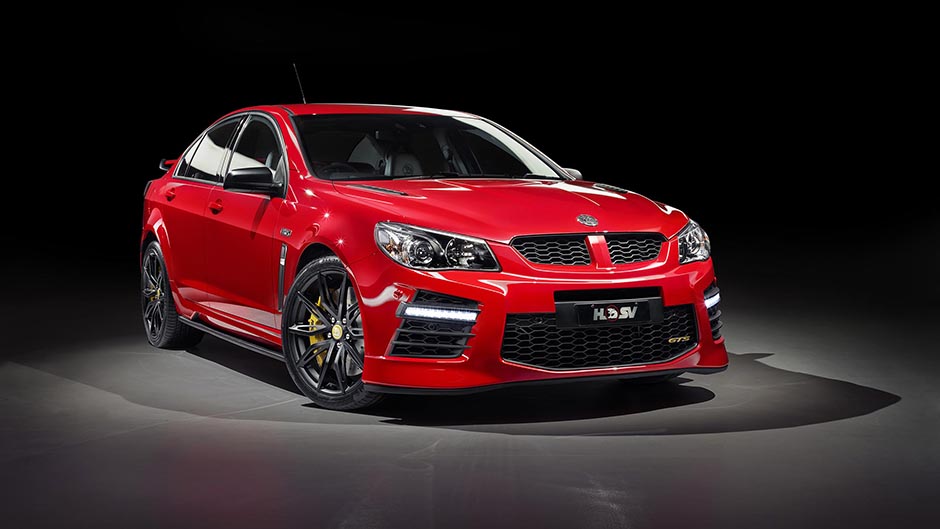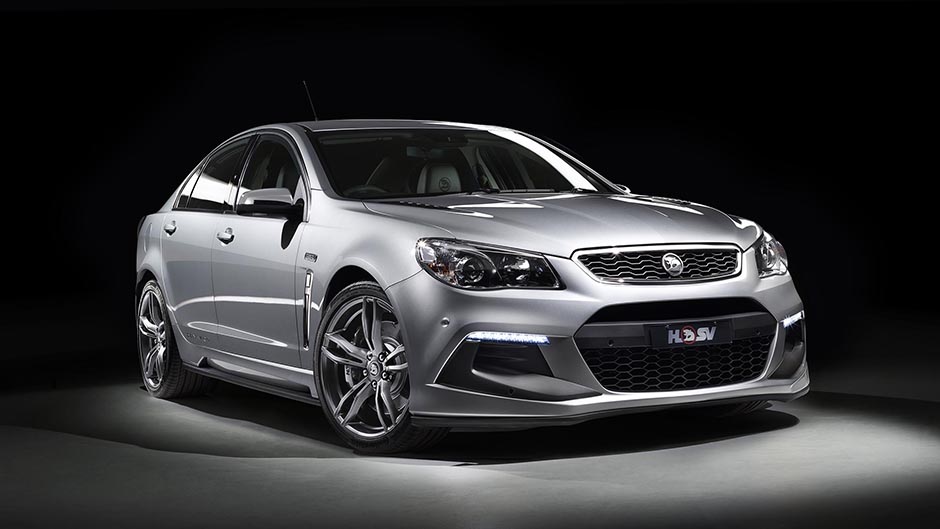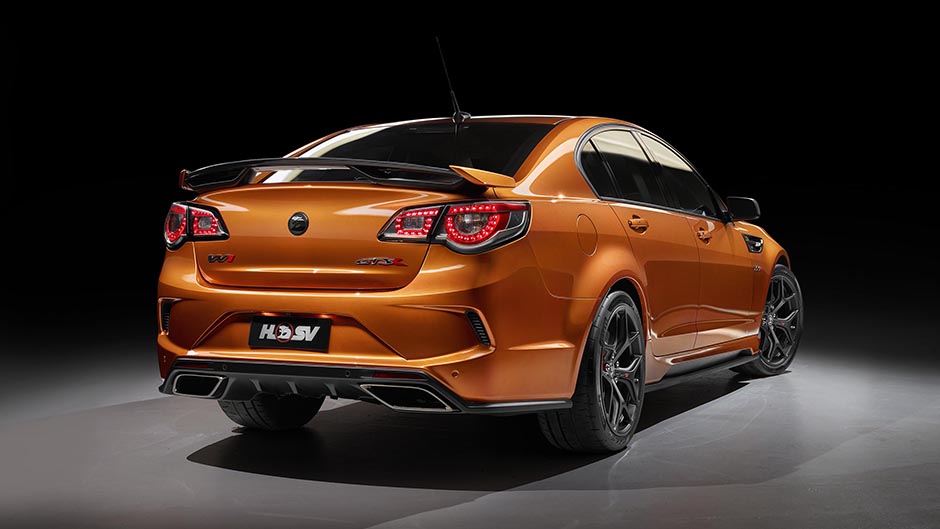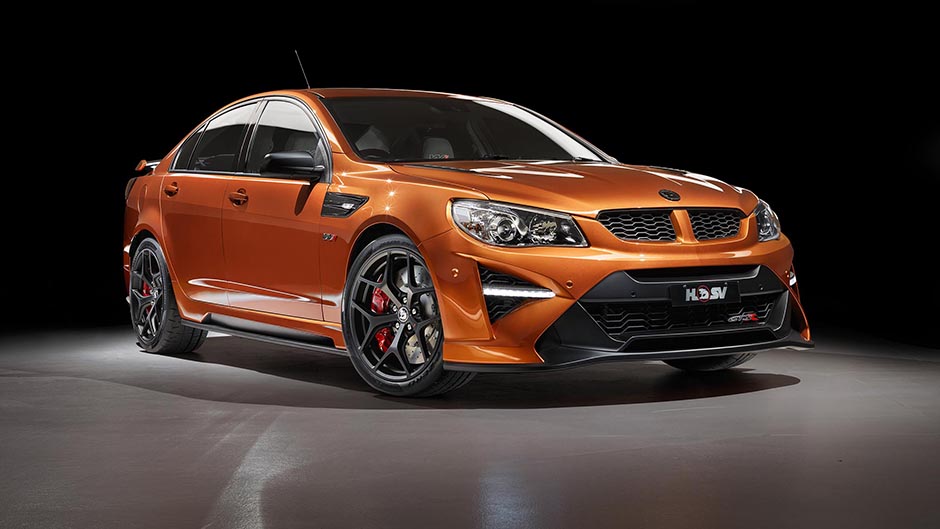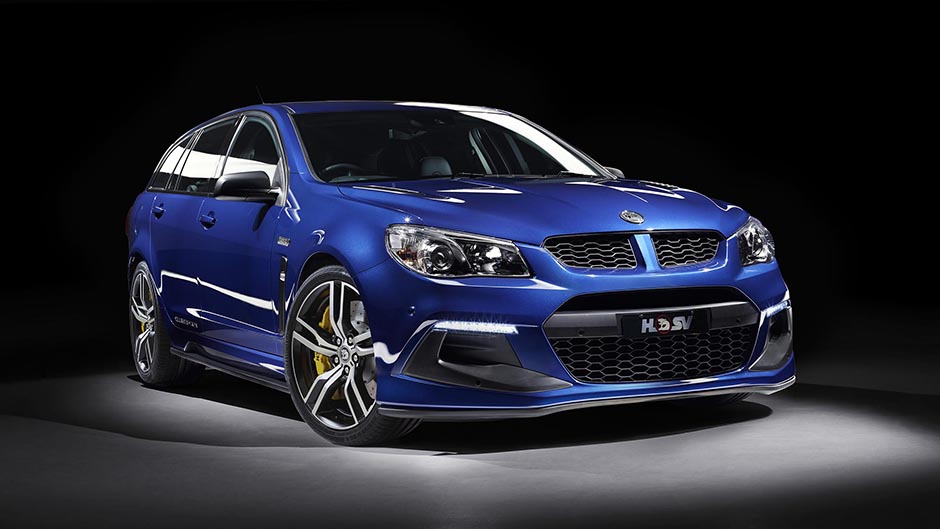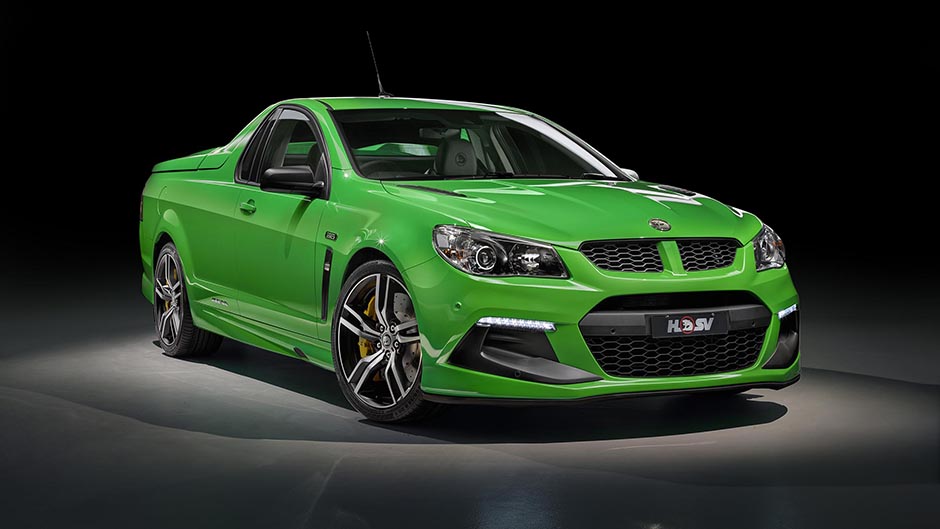2017 HSV GTSR W1 track test
Words: Kyle Cassidy | Photos: HSV
The big Aussie auto shutdown has a flow-on effect for the likes of HSV. And so it’s the end of a 30-year era of churning out hot-rod V8 Commodores, but the company will serve up one final round for the faithful.
With the writing on the wall, so to speak, the team at HSV has been busy readying a swansong for the Aussie-made Commodore. At the launch of the new MY17 cars last month, HSV’s Managing Director Tim Jackson said, “We didn’t want to go quietly into the night.” Proving most of the rumours true, HSV has cooked up one last hero car in the new 474kW GTSR W1, and has also delivered a new range of GTSR models to satisfy the demand for Aussie-made muscle. While it’s not the end of HSV, it’s certainly curtains for the cars and utes that have made the brand famous.
On the zenith for the Zeta platform, Jackson said, “We wanted to do something special to meet our customer expectations, and we knew even before the rumours started that they were high. They wanted something special, something collectable, something iconic.” And that something special is the GTSR W1. With the LS9 supercharged small block, it adopts the V8 Supercar-derived Supashock suspension, and is available only with a six-speed manual. But HSV will also offer an LSA-powered GTSR sedan and Maloo ute. “We could have said, well, let’s just do one car, but in order to do that car right, we had to invest a fair amount of money and we were better off developing a range in order to do that,” said Jackson. “It also gives customers the chance to buy into different products at different price points.” And with just 300 W1s on offer most will miss out. Of those, 20 are earmarked for NZ, and all of those $189,990 examples have already been sold.
Along with the GTSR, there’s also a 30 Years Anniversary range, essentially an update to the LSA models with the usual anniversary decals and badges. There’s a bit more substance to them however, power now registering 410kW with 691Nm of torque thanks to engine calibration work. Figure also on HSV’s torque vectoring by brake; what was once the domain of the GTS alone has been added to all models. They’ve also taken the opportunity to tune the bi-modal exhaust to be more active in delivering that signature V8 rumble.

The GTSR
The GTSR picks up where the GTS leaves off, delivering a new look, enhanced dynamics and a smidge more power from the LSA V8. As HSV chief designer, Julian Quincey said the GTSR is intended to convey the look of a modern track-focused vehicle, reinforcing HSV’s heritage with HRT. Up front, all the necessary air intakes are contained neatly within a new black graphic. The slot up top feeds the engine while the one down below flows through to the transmission cooler. Brake cooling ducts to the side were included in the initial design, but testing concluded they weren’t needed and so are for effect only.
The GTSR models also gain pumped front fenders for extra visual muscle. These new plastic guards add around 35mm to the overall width and house wider, nine-inch front wheels. “I’ve been pushing for unique fenders for over ten years now,” said Quincey. “We did a scale model in the studio that included the wider guards and I thought they were something that was going to get knocked back. But if you look at the likes of the M cars and RS Audis they use the greater stance to give them a more muscular front end and these new fenders have given us that.”
Some may be disappointed at the lack of an OTT V8 Supercar-aping rear spoiler like the original GTSR. Quincey said it was something they thought long and hard about; “The original GTSR had one of the biggest spoilers in modern history, but we think 20 years on, that’s not appropriate now.” And you can’t get your W1 in bright ‘Yellah’ like the original either as the MY17 colour palette is dictated by the Holden donor cars.
Some inspiration from the old GTSR is clear in the badge, which is a ‘modernised interpretation’, while the W1 uses genuine carbon fibre for the rear wing and the side fender vent. The new forged wheels are influenced by the rims of a GT3 racer with a waisted spoke design, and are said to be the lightest 20-inch wheel HSV has ever offered. Inside, the GTSR is treated to a mix of Alcantara and Nappa leather seat trim, and matt black appliques, while the W1 gets a full Alcantara trim.
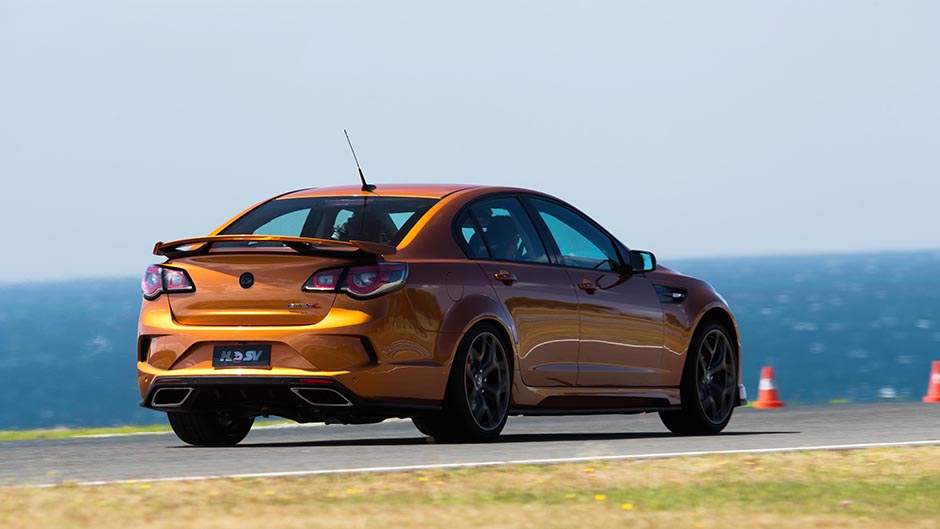
OK, now tell me about the W1
Alright then. The show piece of the MY17 range is the limited edition W1. According to Engineering Director, Joel Stoddart, they wanted to create ‘an Australian icon’. “The HSV team is full of passionate car people and we wanted to make sure the car didn’t go out with a whimper,” referring to the MY17 being the last project on the Zeta platform, which debuted with the E Series in 2006.
The first hurdle for the project was to secure a suitable engine. Stoddart says the LSA is maxed out within GM durability requirements, and so to gain more power they needed a better engine, which they found in the LS9. After time spent in the US, they found a stockpile of LS9s, originally from the sixth-gen Corvette ZR1, in GM’s inventory which made the program viable. With the LS9 now out of production, it’s this limited supply of engines that dictated the overall production numbers for the W1.
So why not go for the newer LT4 engine from the current Z06? It’s based around the newer GM Alpha platform and so the electrical architecture wasn’t going to marry up, among other reasons. But the LS9 still delivers the goods with HSV confirming output at 474kW, with 815Nm of torque at 3900rpm. While it’s a 6.2-litre supercharged V8 like the LSA, there are a few key differences. The bulk of the extra power comes from the LS9’s larger supercharger that sucks in 2.3 litres of air per rotation. And with the Eaton four-lobe rotor design spinning at a maximum of 15,000rpm it sucks big time. The LS9 has a lighter rotating assembly so it spins more freely. The innards include forged titanium conrods, titanium inlet valves, forged aluminum pistons with cooling oil jets, and a unique cam. With a redline of 6600rpm, it revs 400rpm higher than the LSA.
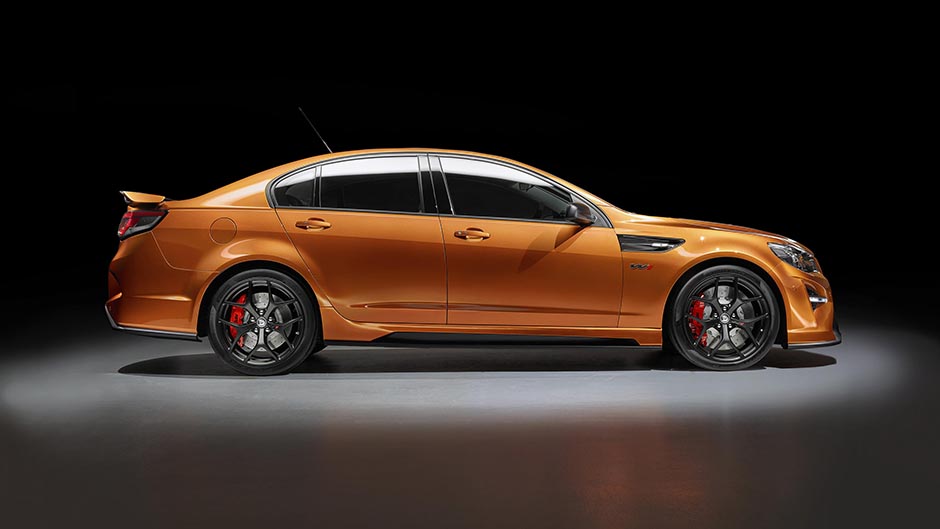
Making it fit required a new serpentine belt arrangement as the Commodore has no need for a power steering pump, and the oil tank for the dry sump lubrication had to be modified to fit. The radiator is tilted back six degrees to make room for an over-the-radiator-type carbon fibre air box. Stoddart says some sections on the intake are just 2.5mm thick and carbon fibre was the only material that is up to the heat stress under the bonnet. He says the engine sensors are particularly sensitive so if the air box starts to wobble under the extremes the sensors would ‘start throwing code’ and back the engine off. The air is cooled via a 50 per cent larger heat exchanger than that fitted to the Corvette ZR1, as the W1 is a much heavier car. Stoddart says the cooler will knock 60 degrees out of the charged air from the blower to the intake which “allows us to go harder for longer.”
HSV also designed a new stainless exhaust system with a ceramic coating and larger integrated cats for better gas flow. And they took the opportunity to recalibrate the bi-modal exhaust system, the new tune introduced to all MY17 cars. While it still uses the same parameters of engine and road speed and throttle position, these have been ‘relaxed’ to deliver more of that signature rumble.
The next stumbling block was finding a transmission to handle over 800Nm of torque. The solution was to rework the Tremec TR6060 manual (MH3 spec for the anoraks), given the driver car focus for the W1. It gets a new input shaft and uses the same gearset as the ZR1 which is designed to keep the LS9 spinning in its sweet spot. There was a bit of rejigging to make it all fit with a ZF Sachs twin-plate clutch and solid flywheel.
The W1 is finished in HSV’s Clayton facility where a GTS rolls in, the LSA and gearbox are removed and the LS9 is fitted along with the new guards and the suspension.
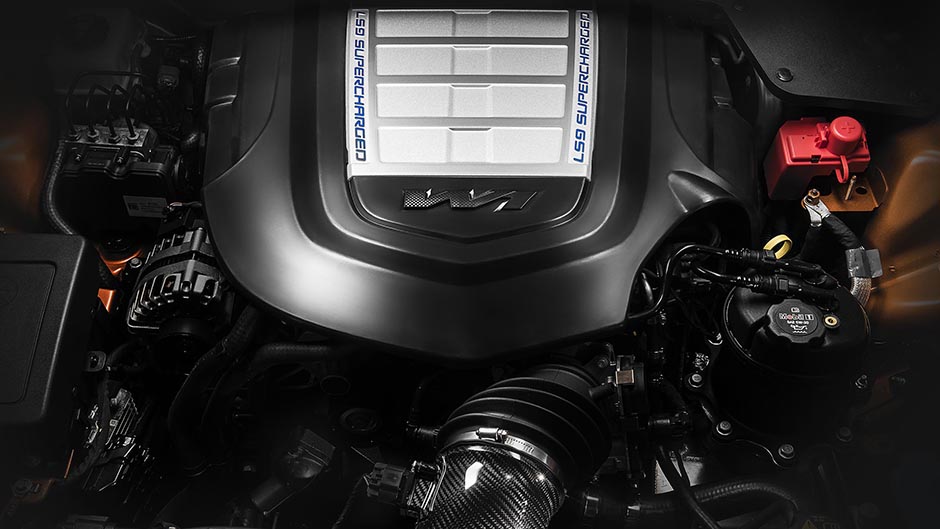
Bending and braking
HSV wanted the W1 to be ‘track inspired’ and to that extent it uses Supashock non-adjustable dampers with a set-up similar to a V8 Supercar. The fronts use an upsidedown monotube strut with internal rebound spring, though the mounting is modified. “We found trying to implement a full race system just didn’t work on a road car; it was just too noisy. So we used the top strut mount out of the road car which eliminated 95 per cent of the noise and we maybe lost five percent of the performance,” says Stoddart.
Internally, the dampers are the same as a V8 Supercar uses, while the spring rates are 2.2 times stiffer than those on the current GTS. On the rear they’ve replaced the usual coilover with a damper and a separate conical spring. Overall, they’ve gone for improved turn-in and greater control with the set-up. “The Supashock set-up gave us the opportunity to really finetune the handling of the W1 and it’s a track-focused suspension system. It’ll shine out on the circuit, especially the harder you push it.”
The LSA-powered GTSR sedan retains its magnetic ride set-up, as Stoddart explains “it’s an everyday driver and you have to engineer some compromise around driveability and refinement.” The Maloo also retains its standard constant rate dampers.
They’ve gone large on the brakes for the GTSR and W1, both getting a new forged monobloc caliper up front that’s a little lighter and stiffer, and delivers a 25 per cent increase in pad area. Being a monobloc design, the caliper is slightly smaller, allowing HSV to fit a fully floating 410mm rotor up front. The wheels themselves are a half inch wider for the GTSR cars, with a nine-inch for the steering wheels and 10s on the rear. This has brought about a 3mm reduction in offset to improve steering feel and response. Exclusive to the W1 is a set of Pirelli P Zero Trofeo R tyres, described as road legal race rubber, measuring 265/35R20 on the front and 295/30R20 on the rear. The GTSR retains its 255/35R20 front and 275/35R20 rear Continentals, but are stretched to fit. Given the suspension and tyre overhaul, the ESC has been completely recalibrated.
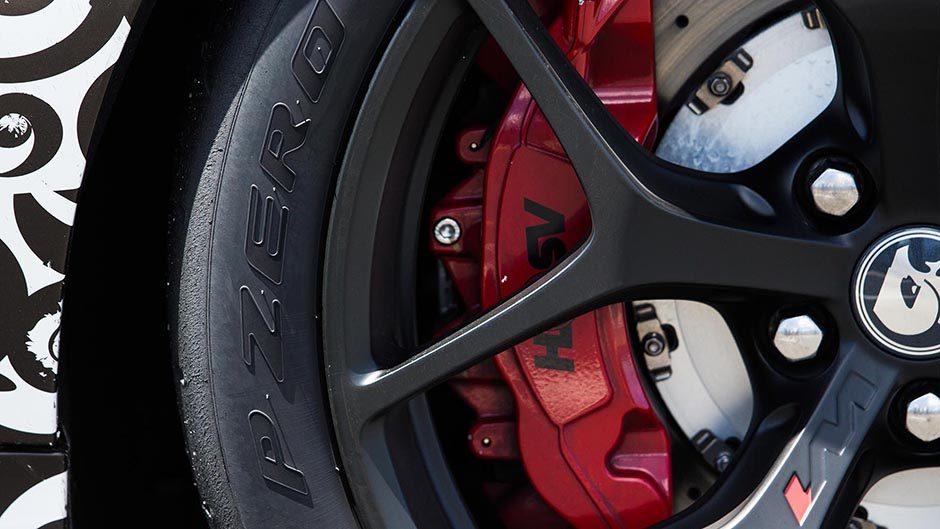
What’s it go like?
We sampled the range during the Australian launch at the Phillip Island circuit. The GTSR cars feel more incisive on the turn, the revised offset and reduced sidewall help them get into the bends quicker, while the big brakes offer the stopping power needed on a heavy sedan, with a good, strong pedal feel. Even the Maloo is great fun, and the manual ‘box slick considering all that torque.
As to the W1, while the increase in on-paper numbers isn’t huge in comparison to the GTSR, the powerplant’s character makes this a very different beastie. The LS9 revs more freely, pulls harder and longer, and sounds meaner too, the valvetrain more raspy and there’s just more noise about it. With the tall and closely stacked ratios, the LS9 always feels good to go, hauling hard from 3000rpm as it climbs up the rev range, and feels muscular right up to 6500rpm. And it’s palpably faster.
The transmission’s action and clutch feel as good as the regular GTSR too, nothing gnarly about their actions considering the stresses. With the tyre and stiff suspension combo, the W1 turns with even more intent and holds on harder too, the front end grip enhanced by TV in the longer bends. But it’s the adhesion and stability in the faster corners of Phillip Island that see it carrying a lot more speed. It also hooks up better on the exits, you can roll into the throttle a bit earlier and harder. But with the Track ESC setting allowing some liberal leeway, the rear tyres can be unstuck with a bit of persuasion. It’s a good driver’s car; fast, loud and not overly digital, it requires some finesse and concentration while it’s grip and balance are impressive for such a big car. That ride is sure firm though. Trundling back down the pitlane, the W1 transmitted just about every bump in the concrete.
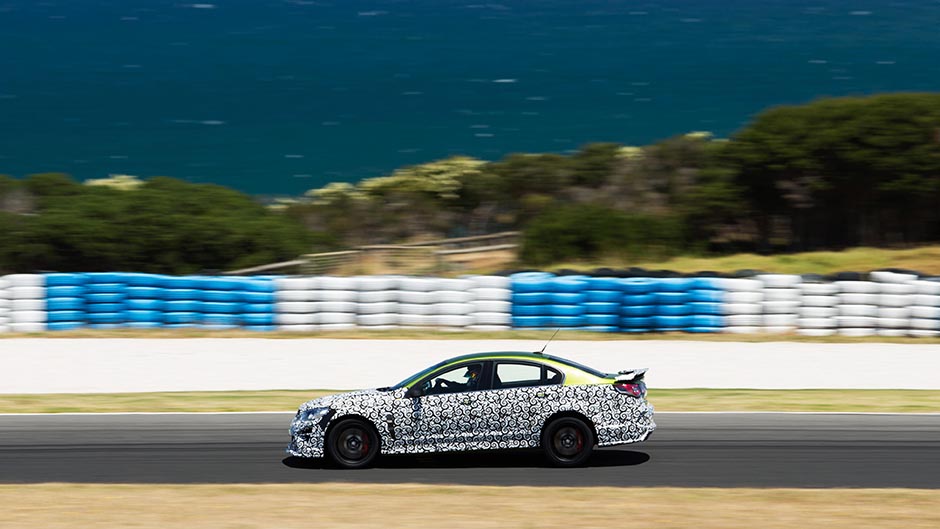
HSV’s preliminary performance testing figures say the W1 will hit 100km/h in 4.2sec, which is no faster than a GTS. “Even with the tyre and suspension grip increases, this is still a monster of a car,” says Stoddart. “It’s pretty hard to launch with all the torque and the tall first gear,” which by the way runs to 98.5km/h. HSV’s testing also reveals a claimed 80-120km/h time in 2.16sec using second gear, and 2.96sec in third. HSV also likes to use lap times around the Winton circuit as a performance yardstick, the W1 lapping in 1min 32sec, down from a 1.36.2 in the regular GTS around the 3.0km circuit. And for the record, average consumption is rated at 16.5L/100km, whereas the GTSR is 15.3.
As mentioned there will be 300 W1s, and HSV reckons there’s demand in Australia for at least 800 so it will be a solid investment for those who have secured one. HSV will make around 1300 GTSR sedans and 670 GTSR Maloos for those who missed out. As for life post-Zeta, HSV is remaining mum, Jackson saying they are still in negotiations with Holden but will have something to announce later in the year. He is clear about one thing though; there will be no more surprises, this is it for the big Aussie V8. And it’s not a bad way to go out either.


